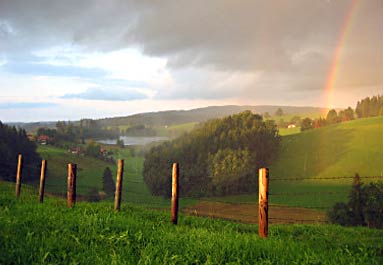



|

Will there be a better time to buy land?
By Curtis Seltzer
I think the answer is, “Not likely.” At least in the future.
U.S. macro-economic conditions are generally aligned to help buyers.
First among these is the cost of money. Interest rates are about as low as they’ve been. Any long-term, fixed-rate financing will work better now than it will a year or two from now when rates are likely to be higher when the overall economy improves and the Federal Reserve shifts its concern to keeping inflation in check. The upside on interest rates is here; the downside is tomorrow.
Access to this cheap money is a connected consideration. Some lenders are sitting on their money like comatose hens on the one egg in their lifetimes. But other rural lenders are willing to make local land-related loans, though the borrower may have to do more work than in the past. Farm Credit coops, credit unions and small, local banks are still in the game. So are some mortgage brokers. The big regional and national banks are sitting on benches built by the taxpayers. Financing is available for large timberland acquisitions. Farm-state lenders are lending for farms.
Rates for land deals will go up. Lenders always charge higher interest rates on commercial deals and land-alone loans. These rates are said to be pegged to residential mortgage money. While any land buyer should grumble about being hit with a premium-burdened interest rate regardless of how collateralized and how sound the land purchase, the future will inevitably see these rates move up in line with residential mortgage money. The six percent, or so, offered today will seem cheap in tomorrow’s rear-view mirror.
ARMs that start at the bottom go up over time, not down. Short-term deals of no more than seven years can get a low fixed rate now with a yearly adjustment for the rest of the term, or some variation of fixed and adjustable over time. That will work for a buyer if the deal is in and out within the fixed part, but I would be leery about riding the ARM up through the whole term. So a longer-term project that is ARM 7/1 financed over, say 15 to 30 years would not appeal to me.
Land prices may or may not be at bottom. No one can know, and it doesn’t matter in the final analysis to either buyer or seller. We’re around the bottom.
What does matter from the buyer’s perspective is the acquisition price (and terms) today as compared with his best guess as to acquisition price (and terms) at various future points in light of the property’s assets and liabilities and his resources and plans. A good buy price is what the property is worth to the buyer, all things considered.
The buyer should expect some reduction in asking price in most land markets. Some sellers and listing brokers will resist, owing to the memories of past expectations. Some properties may still be properly valued at 2007-2008 prices. But with certain exceptions -- prime farmland, genuine HBU land in a market that’s moving such properties, certain second homes -- those prices are bubbles. My guess is that it will take another ten years on average for those prices to be economically rational and justified, and I think prices will be under pressure for another year or even two.
What matters from the seller’s perspective is getting a sale done at an acceptable price, not getting it done at the bubble price of 2007-2008.
Land prices were run up by flipping, HBU pressures, generalized real-estate euphoria and easy credit until 2008. Energy production and commodity prices pushed up farm prices in parallel. Land sellers were sticky about coming off those inflated values from the second half of 2008 until the last couple of months.
But reality is setting in for those sellers whose circumstances require them to sell now. The 2007 prices were not related to intrinsic values—that’s the cold-water message that’s out there today.
I’ve seen some sellers lowering their asking prices, or lowering their bottom-line price even when they’ve held to the inflated asking price. My sense of this situation is that in most cases land sellers are not taking losses on price-lowered sales, but simply making less profit. Flippers who got in a couple of years ago are another matter.
Land prices trend up over time. They resist downward pressure in normal circumstances, but today’s circumstances are anything but that. Sellers should accept that buyers are for the most part not paying the prices of two years ago.
Where a seller can hold, he should; where he can’t, he should make a deal.
Curtis Seltzer is a land consultant who works with buyers and helps sellers with marketing plans. He is author of How To Be a DIRT-SMART Buyer of Country Property at www.curtis-seltzer.com where his weekly columns are posted. He also writes for www.landthink.com.
|
|









